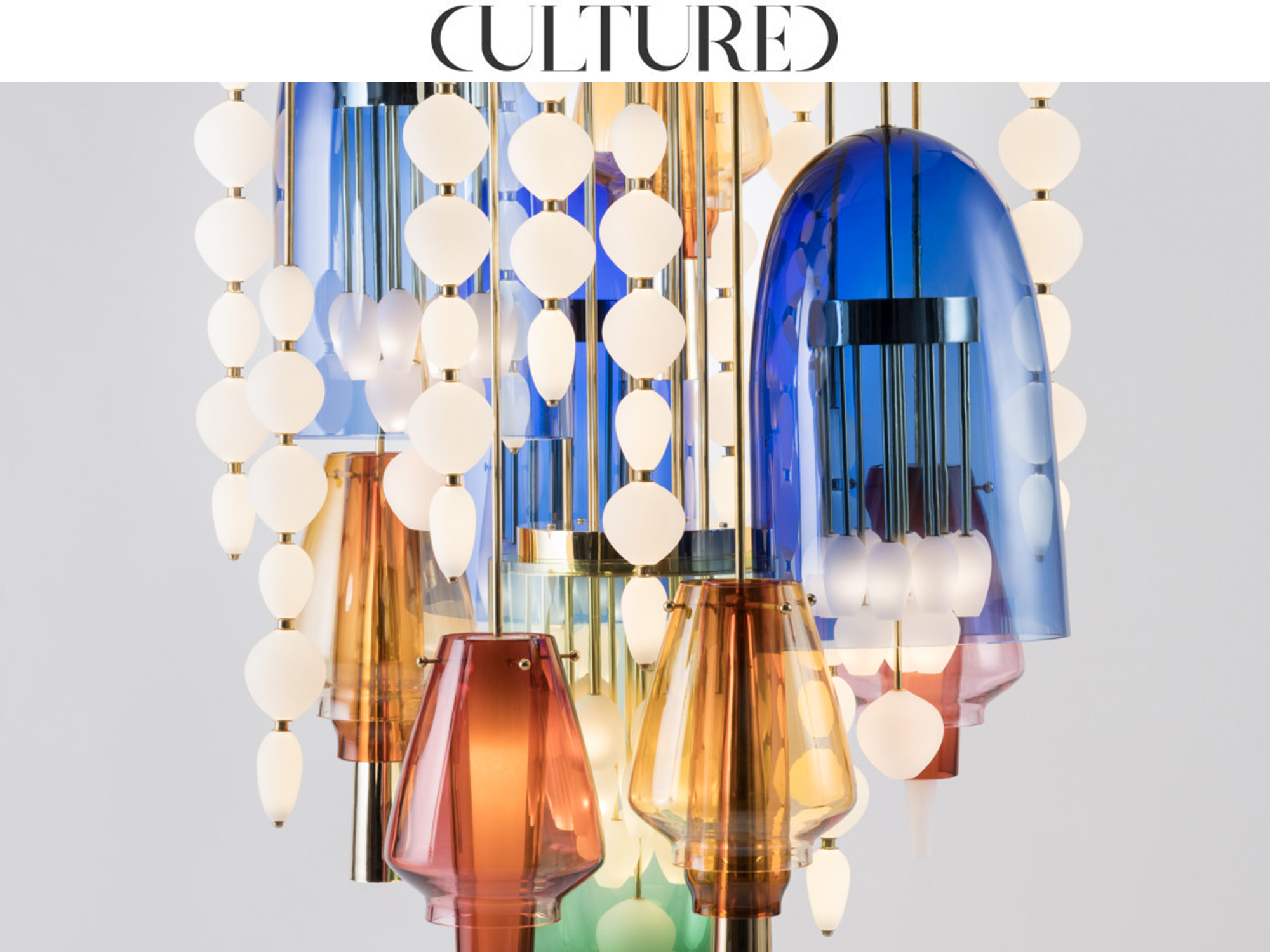By Bana Bissat
The Afrofuturist multihyphenate’s first solo gallery show “Hierophany” opjens this week at Friedman Benda in New York, but it’s not all that he’s been up to.
Ini Archibong has a busy fall season in New York. For starters, his chandelier Vernus 3 has been acquired by the Metropolitan Museum of Art for its new Afrofuturist Period Room, “Before Yesterday We Could Fly,” which will be inaugurated in November. It’s a career achievement that the Nigerian-American, Switzerland-based designer describes as “unexpected and awesome. The fact that they understand that the things that I create are meant to have that Afrofuturist feeling… it just feels great to be understood,” he says with a sheepish smile, referencing jazz composer Sun Ra as one of his biggest influences. “For me, space is the place.”
In parallel, his first solo gallery show “Hierophany” opens at Friedman Benda in New York on October 7. Though Archibong has participated in a reasonable number of fairs and group exhibitions, this marks his inaugural opportunity to present his cohesive vision—or a “full experience and image of spiritual reality,” as he describes it—rather than contributing a single work to a spatial direction that isn’t his own. “‘Hierophany’ is a physical manifestation of the sacred or the spiritual,” he explains. “When I make a piece, it’s grounded in storytelling or mythology and based on universal or spiritual themes. From that standpoint, my goal is to create a hierophany with everything that I make.”
The show comprises four bodies of work, including Shade Table (2019), a structure fragile in its empowering mysticism; it’s Archibong’s first foray into obsidian (which he says absorbs negative energy) and is the darkest item in the show, if not his entire portfolio. The chandelier Dark Vernus (2021) features blued steel and glass, regally recalling the brighter, sun-hued version that was acquired by The Met. All four works beg the question—how far can Archibong push his materials? “When I’m creating these pieces or experiences that are spiritual in nature, they tend to fall into the category that I consider to be a mythology for the children of the diaspora: taking universal spiritual themes, relaying them in a mythological way and creating artifacts from them,” the designer says.
Archibong’s practice has various personas. He’s referred to as an industrial designer, an artist, a curator, a craftsperson. He also admits that he wanted to get into production design while he was in school. The boundaries between disciplines are clearly of no interest to him and if anything, they’re futile in his multidimensional pursuits. He designed a watch for Hermès but has also had an immersive installation at the Dallas Art Museum. This past June, he introduced his Pavilion of the African Diaspora at the London Design Biennale; it eventually snagged the fair’s Best Design Medal. An architectural folly shaped like a conch, the pavilion was a sanctuary with events and talks: a space for the voices and contributions of people born of the African Diaspora. Just recently, he wrapped up another edition of Design Miami/ Basel where the chandelier Dark Manna 1 (2021) was on view. He will shortly be unveiling a table-and-chair collection for the American design brand Knoll, joining the ranks of masters like Ludwig Mies van der Rohe, Frank Gehry and Eero Saarinen.
Though Archibong has been a fixture in the art and design worlds for several years, he expresses how liberating it feels to finally have a show all his own. “The goal is to make a cohesive body of work out of disparate elements, and a solo show means I can present these elements together,” he says. Archibong’s work is an invitation into something mystic, and at Friedman Benda, his world making is finally on display.










